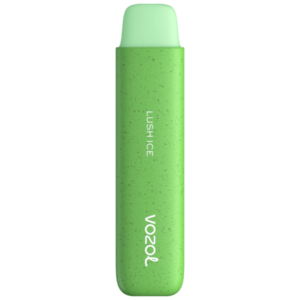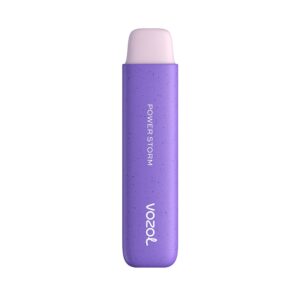Erforschung der Sicherheit von Vaping: Mythen und Fakten
In „Exploring the Safety of Vaping: Myths and Facts,“ we delve into the often misunderstood world of vaping. This article aims to separate fact from fiction, providing clear, evidence-based insights into the safety and health implications of vaping. Join us as we uncover the truth.
Table of Contents
- Introduction: Vaping Safety Myths vs. Facts
- Debunking Common Myths About Vaping
- Understanding the Health Impacts of Vaping
- Vaping Regulations and Safety Standards
- Tips for Safe Vaping Practices
- Making an Informed Decision: Vaping as a Safer Alternative
- FAQ
Introduction: Vaping Safety Myths vs. Facts
The debate surrounding vaping safety is rife with conflicting information, making it challenging for individuals to discern myths from facts. In this comprehensive exploration, we aim to shed light on the reality of vaping, cutting through the haze of misinformation.
Our journey begins by addressing common misconceptions that have clouded public perception, often fueled by incomplete research or sensational media coverage. We then pivot to present scientifically-backed data, offering a more nuanced understanding of the risks and benefits associated with vaping.
By comparing these findings with traditional smoking, we provide a balanced perspective, essential for anyone considering vaping as an alternative. Our goal is to empower readers with factual, unbiased information, enabling informed decisions about their health and well-being.

Debunking Common Myths About Vaping
Vaping, often shrouded in misconceptions, is frequently misunderstood. One prevalent myth is that vaping is as harmful as traditional smoking. Research, however, indicates that while not risk-free, vaping generally contains fewer harmful chemicals than cigarettes. Another common belief is that e-cigarettes always lead to smoking.
Studies suggest that while this can be true for some, especially younger users, for many, vaping serves as a smoking cessation tool. Additionally, the idea that e-liquids are dangerous due to antifreeze components is misleading. While propylene glycol, used in antifreeze for its non-toxic properties, is also found in e-liquids, it is considered safe for inhalation in the quantities used in vaping. Knowing these nuances is crucial in demystifying vaping.
Understanding the Health Impacts of Vaping
The health impacts of vaping are crucial in navigating its role in modern society. Vaping is often viewed as a less harmful alternative to traditional smoking, primarily because it lacks many of the combustible toxins found in cigarettes. However, it’s important to acknowledge that ‚less harmful‘ does not equate to ‚harmless.‘
E-cigarettes do introduce nicotine, which is addictive and can have adverse effects on heart and lung health. Additionally, the long-term effects of inhaling vaporized chemicals, including flavoring agents, are not yet fully understood. For non-smokers, especially youth, starting to vape can pose unnecessary health risks.
For smokers, vaping might offer a less harmful option during smoking cessation. It’s a complex landscape where the health impacts vary based on individual circumstances and usage patterns.

Vaping Regulations and Safety Standards
Navigating the evolving landscape of vaping regulations and safety standards is essential for both manufacturers and consumers. Globally, these regulations vary significantly, reflecting diverse approaches to balancing public health concerns with the growing popularity of vaping. In many regions, standards focus on limiting nicotine content, restricting flavor options to deter youth appeal, and enforcing strict labeling and quality control measures.
Additionally, safety standards are increasingly stringent, mandating child-resistant packaging and transparent ingredient disclosure. These regulations aim to mitigate health risks, particularly for young users, while allowing adult smokers access to potentially less harmful alternatives. For consumers, staying informed about these regulations ensures safer usage. For the industry, compliance is not just about legal adherence but also about building consumer trust and promoting responsible vaping practices.
Tips for Safe Vaping Practices
Adopting safe vaping practices is crucial for minimizing potential risks. Here are key tips to ensure a safer vaping experience:
- Choose Reputable Brands: Opt for well-known manufacturers that comply with safety standards and regulations.
- Proper Device Maintenance: Regularly clean and maintain your vaping device to prevent malfunction or contamination.
- Battery Safety: Use the correct charger and never leave batteries charging unattended. Store batteries properly to avoid accidents.
- E-Liquid Caution: Purchase e-liquids from reputable sources. Be mindful of nicotine content, especially if reducing intake.
- Avoid Modifications: Don’t modify your device or mix e-liquids unless you are knowledgeable and understand the risks.
- Hydration is Key: Vaping can cause dry mouth, so stay hydrated.
- Be Cautious with Usage: Start with lower doses of nicotine and don’t vape excessively.
Following these guidelines can help ensure a safer vaping experience, reducing the likelihood of accidents and health issues.
Making an Informed Decision: Vaping as a Safer Alternative
Making an informed decision about vaping, especially as a potential alternative to smoking, involves weighing its relative risks and benefits. Vaping is generally considered a safer option compared to traditional smoking, primarily because it lacks the combustion process that releases many harmful toxins found in cigarette smoke.
However, it’s important to recognize that ’safer‘ does not mean ’safe.‘ Vaping still exposes users to nicotine, an addictive substance, and the long-term health effects of inhaling vaporized chemicals are not fully understood. For current smokers, vaping can be a step towards reducing smoking-related risks.
For non-smokers, particularly youth, the initiation into vaping can introduce unnecessary health risks. Ultimately, the decision to vape should be informed, cautious, and contextual, considering personal health, smoking habits, and the latest scientific evidence.
FAQ
While vaping is generally considered safer than traditional smoking because it doesn’t involve combustion and the release of many harmful toxins found in cigarette smoke, it is not completely safe. Vaping still exposes users to nicotine and other chemicals, and the long-term health effects are not fully understood.
Many people have found vaping helpful as a tool to quit smoking. It can provide a similar sensation to smoking but with reduced health risks. However, success varies from person to person, and it’s important to approach it as part of a comprehensive plan to quit smoking.
Yes, there are risks associated with vaping for non-smokers, especially for adolescents and young adults. Starting to vaping can lead to nicotine addiction and potentially lead to smoking cigarettes. It’s important for non-smokers to consider these risks before starting to vape.
To ensure safer vaping practices, use products from reputable brands, regularly maintain your device, avoid modifying your device or e-liquids, be cautious with the amount of nicotine you use, and stay hydrated. Always follow manufacturer guidelines and stay informed about the latest health information related to vaping.